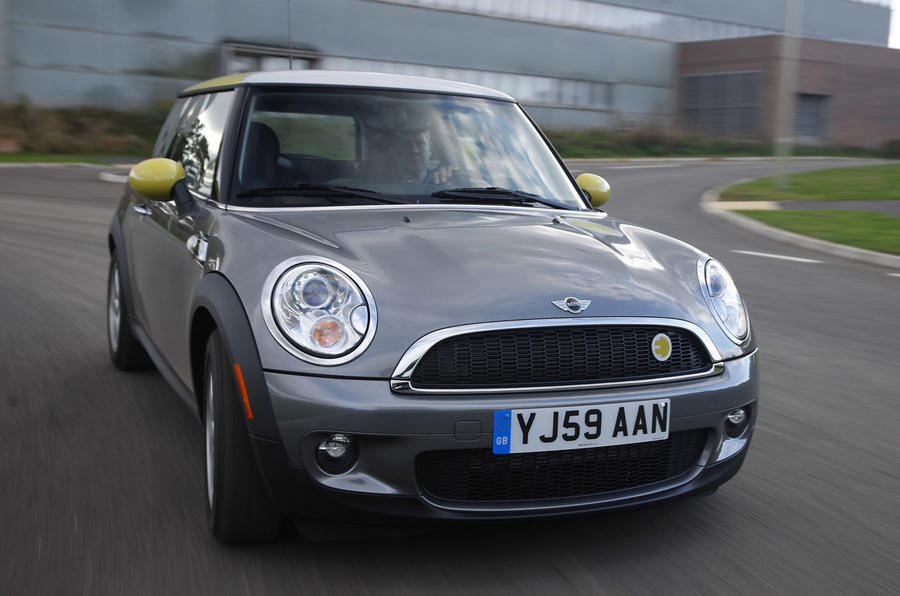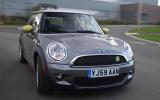What is it?
It’s a Mini that looks, goes, steers and handles a lot like the normal Cooper – and has even better weight distrubution.
However, the normal petrol engine and fuel tank have been replaced by a 201bhp electric motor and a 35kW/hr lithium ion battery (delivering a range of 100 to 120 miles).
To charge this fully takes 10 hours via a normal 13-amp household socket, or around half the time if you have access to 32-amp power.
Does it sound attractive? Don’t get your hopes up about buying one. You can’t. This is one of a fleet of 600 experimental Mini Es, built as an early part of BMW’s Project i, a plan to build the perfect “megacity” car in about four years’ time.
Mini Es are being run in six-month stints in a dozen major capitals across the world to investigate exactly what the new car needs. Forty have come here – half run by fleets, half by individuals.
If you’re one of the chosen you’ll have heard about it already. You’ve been chosen from 515 applicants, you’ll have consented to pay £330 a month, to drive at least 300 miles a month, and to be interviewed by all kinds of researchers about your findings. There’s even a panel of university psychologists who will want to know whether the car (principally because of short range) has done anything to change you or your habits.
What's it like?
Delightful, actually. The interior is entirely familiar, except that the gearstick makes way for a simple PRND quadrant and a discreet meter that shows how much power you’re demanding under acceleration, and putting back through regenerative braking. There’s a big dial for “power left”, too. It’s easy to get going; you just twist the key, wait for an array of lights to flash, select D and toe the accelerator.
Several things are quite different from an internal-combustion Mini, but you’ll get used to them in minutes. The step-off torque – 162lb ft of it – is available from standstill, so performance feels very strong.
There are no gears. The electric motor doesn’t need their assistance. You just select either forward or reverse.
Watch it when you come off the power, though. There’s a regenerative braking system that dumps power back into the battery when you slow, and it causes deceleration so strong that you’ll hardly use the brakes in normal driving. The ESP has had to be tuned to accommodate it.
The drivetrain, which is very smooth, emits a pleasant whir when it's cruising or accelerating, but it’s so silent at low speeds that you have to be careful not to run over pedestrians in supermarket car parks. They just don’t hear you coming.
Performance is impressive, especially below 60mph. The car gets going really well, and can do 95mph, though higher speeds chew battery power at an alarming rate. Cruise at 65mph, restrain yourself under acceleration, and you’ll get 100 miles of range, and more as you learn.
The main drawbacks are the Mini E’s accommodation and weight; the net addition of the battery and electronic controls adds 300kg and subtracts a back seat and most of the boot.





































































Join the debate
Add your comment
Re: Mini E
Why would you scrap them after the trial? That is a waste of resources as it seems to be a very good 2 seater city car.
Re: Mini E
It's a bit like "Back To The Future" with people making electric cars again , after a gap of maybe 100 years. Wonder if someone will revive steam cars next ? Wouldn't like to see all that work being done on breaking the steam land speed record going to waste.
Re: Mini E
I wasn't even able to apply to trial the Mini E living in the Midlands not the South-East. Very frustrating.